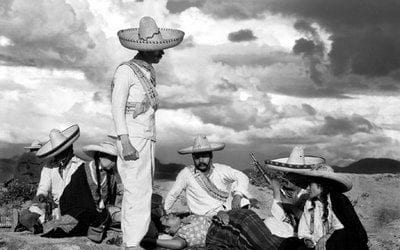Investigations of the Royal Palace of Teotihuacan

In February of 1999, Linda Manzanilla Naim , from Mexico’s National Autonomous University and Leonardo López Luján, INAH, invited William Fash, chair of Harvard University’s Anthropology Department and Barbara Fash, research associate in the Peabody Museum of Archeology and Ethnology, to join the excavation of the Xalla compound at the ruins of Teotihuacan, Mexico. Though the origins and demise of Teotihuacan have been the subject of endless scholarly inquiry and speculation over the past century, one critical piece of the picture has been missing until now. The Xalla compound is believed by Manzanilla Naim and López Luján to have been the first administrative royal palace of Teotihuacan, and home to its ruling class. The project will focus on the documentation, investigation, and conservation of the Xalla Compound, which was built at the same time as the Sun and Moon Pyramids and is located equidistant between them. This work, made possible in part by a grant from the David Rockefeller Center for Latin American Studies, promises to reveal much about the origins of the pristine state at Teotihuacan, as well as about its development and eventual demise.
“Hypothetical reconstruction of stone mosaic sculpture of a supernatural feline, recovered from Structure 2, on the east side of the monumental plaza at Xalla. The feline has goggle eyes like those associated with the Storm God (known as Tlaloc to the later Aztecs), and a feathered-finge arc around the head with starfish, indicating his associations with the sea and the larger cosmos. Mosaic reconstruction by Leonardo Lopez Lujan, photograph by German Zuniga.”
“Excavation of the central shrine structure in the monumental plaza of Xalla, looking south. This structure was rebuilt four times after its original construction at the time the Xalla compound was constructed, indicating its importance in ritual activities in the plaza. Just south of the excavated shrine structure is the unexcavated Structure 3; in the right background is the Pyramid of the Sun. Photograph by Leonardo Lopez Lujan.”
Fall 2001, Volume I, Number 1
Related Articles
A New Golden Age for the Silver Screen
Mexican movies are terrible, don’t watch them, the taxi driver told me when I first arrived in Mexico City last summer. Mexican movies are terrible, and also tasteless, reaffirmed my Spanish…
More than Popcorn Mexico’s Cinemex
Miguel Angel Davila loves movies. Yet, ever since the ’93 Harvard Business School graduate returned to Mexico, he almost never watches them at least not in movie theatres…
Mexico’s Transition Reporters’ Eyeview
Mexico’s transition from an authoritarian system with a king-like president to today’s raucous democracy was a creeping, generational change that lasted many years. In our book, a history of…




